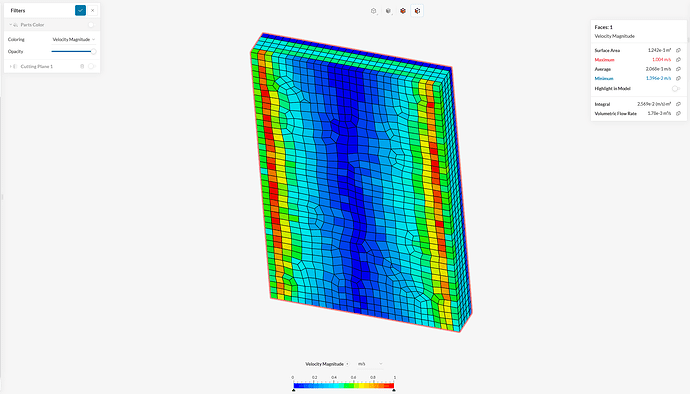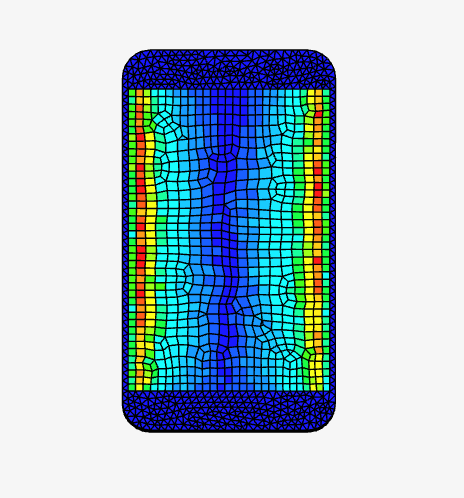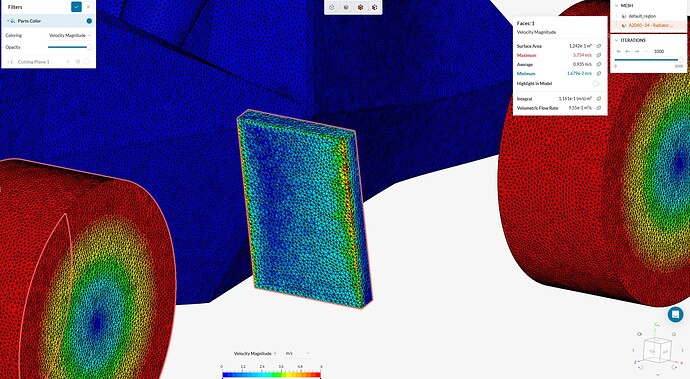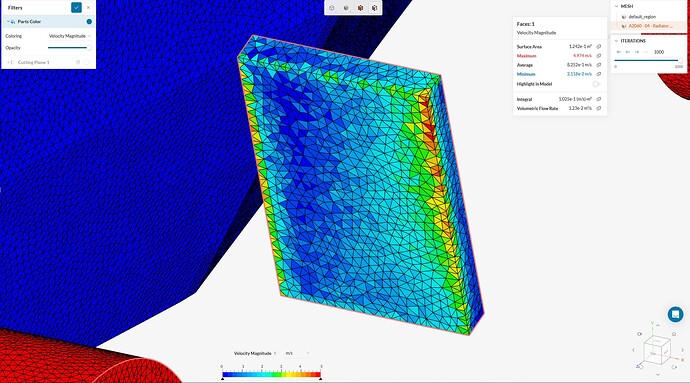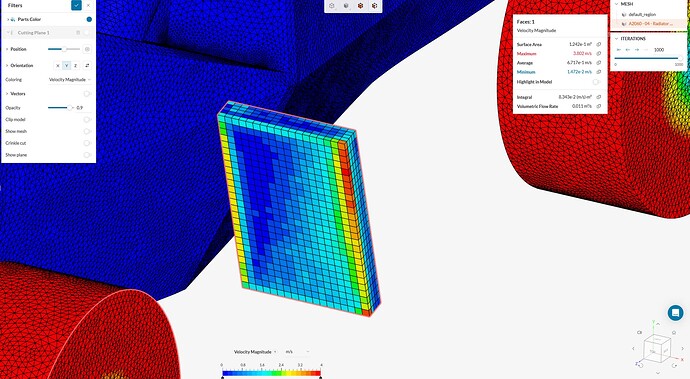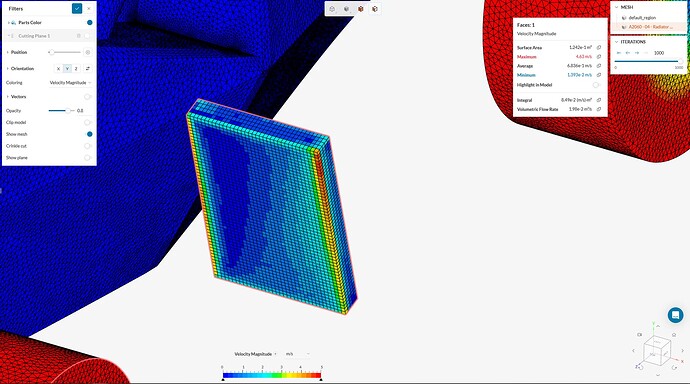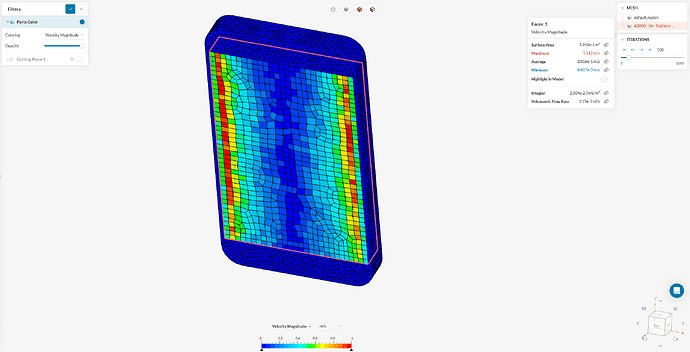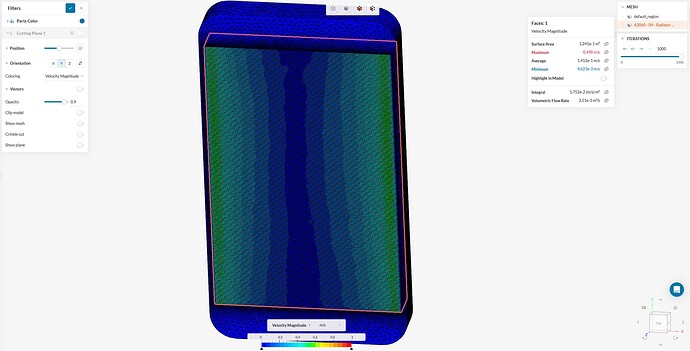Hello. I’m trying to evaluate the flow rate of air through a formula SAE style radiator and I’m having some trouble with the results and general understanding of how it is calculated.
The link to the project is: carenagem teste - Copy by juliotz | SimScale
I’ve followed the simulation setup provided in the following link: Tutorial: Incompressible Flow around a Formula Student Car. The radiator is set up as a porous media, and I’ve used the same Darcy-Forchheimer coefficientes, changing only the normal vectors according to my FSAE team’s radiator position.
When setting up the simulation, I’ve followed a few different approaches, being using the same mesh refinements as the car surface for the porous media and using a Extrusion mesh to control the number of cells across the radiator’s thickness. The issue comes when post-processing the results.
When checking the solution fields and isolating the radiator, there are a couple of things that are confusing me:
- When the porous media is selected, the geometry is considered as 1 volume, when there are 6 faces to it (front, back and sides);
- The statistical value calculated of volumetric flow rate varies significantly across different mesh refinement settings.
One of the simulations ran (run 2)
Is there anything wrong with my methodology?
